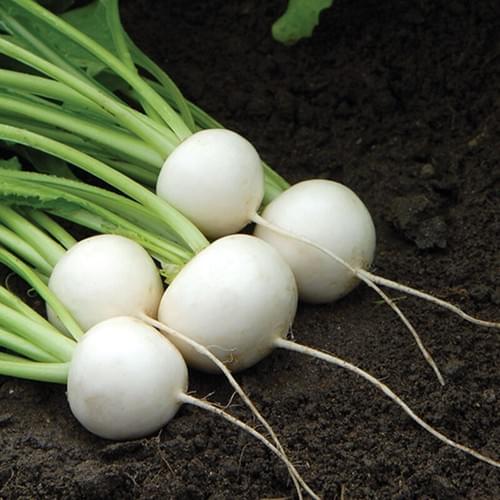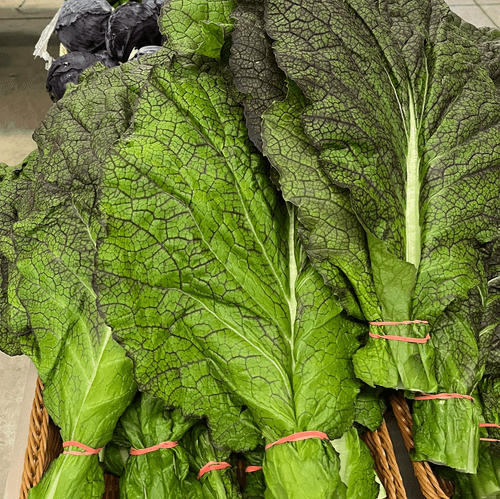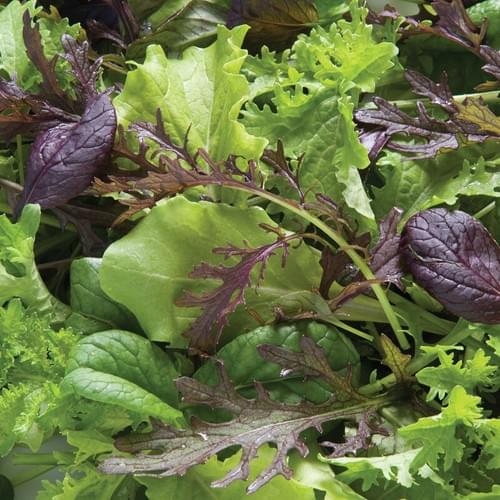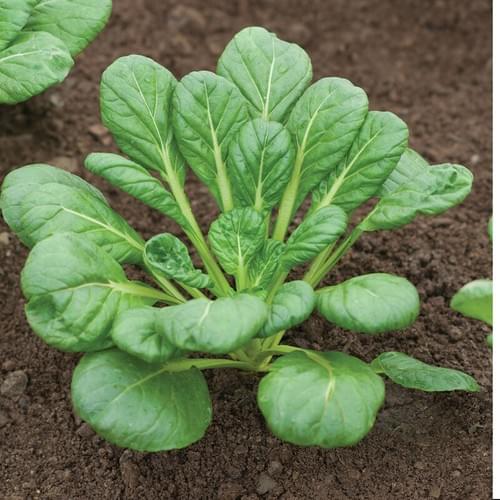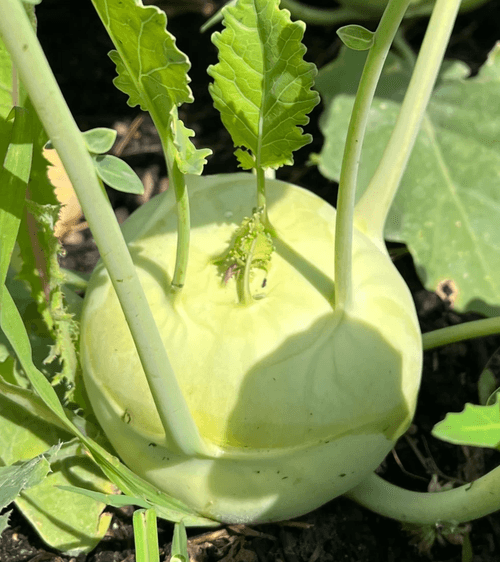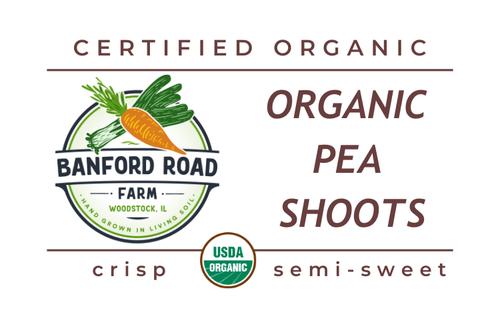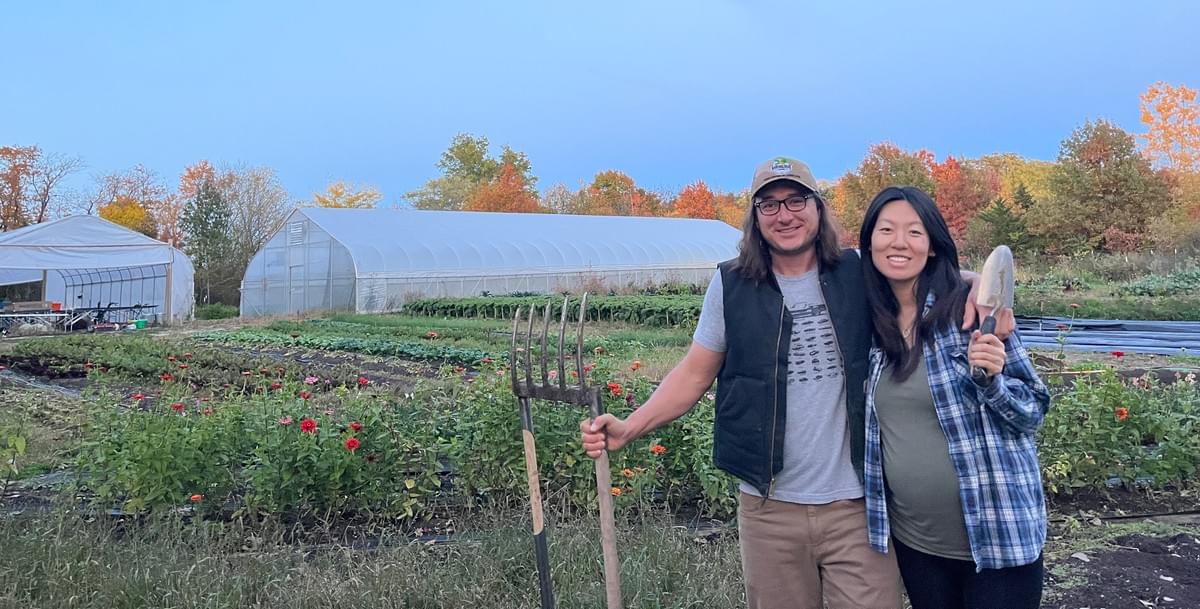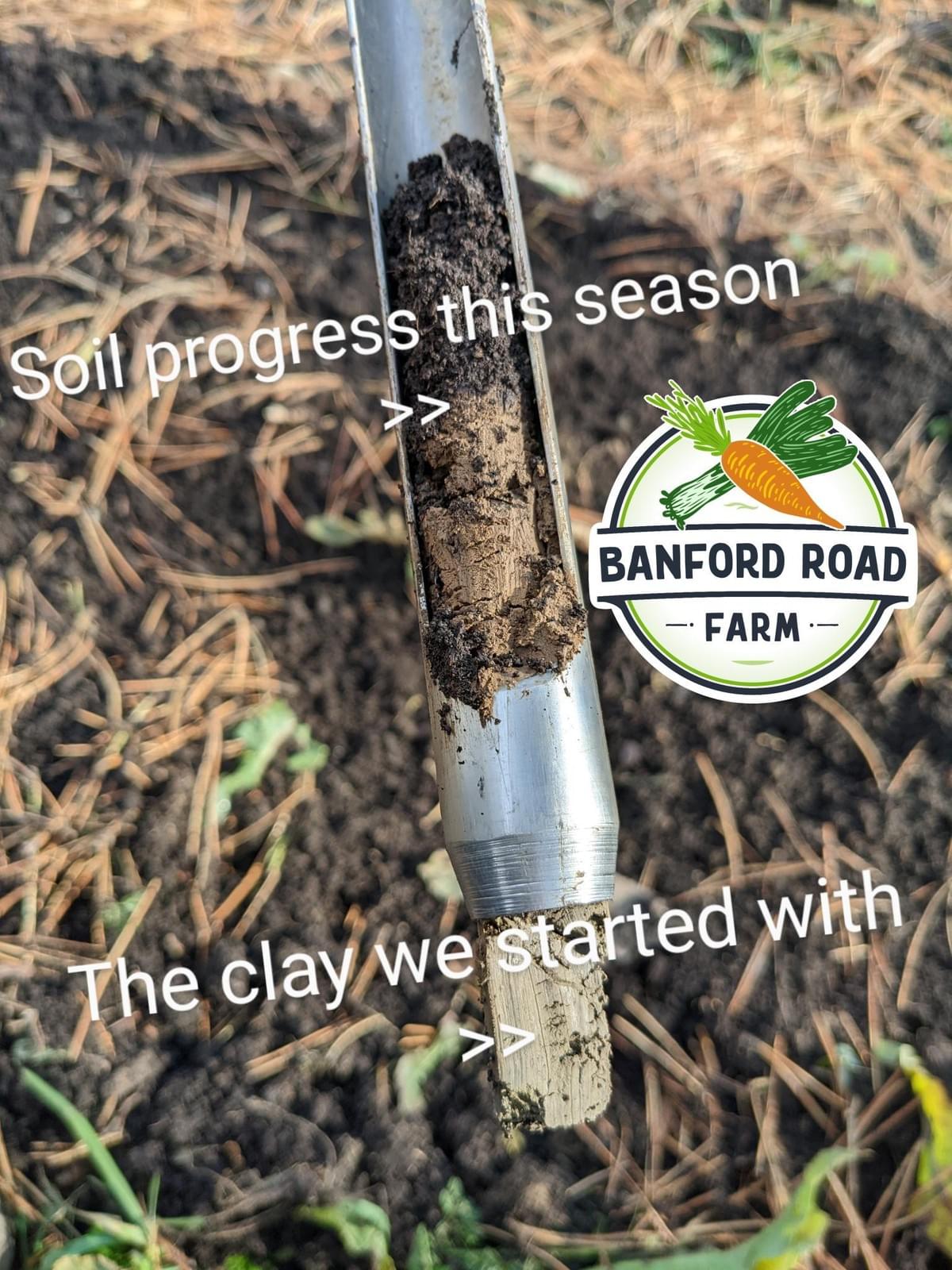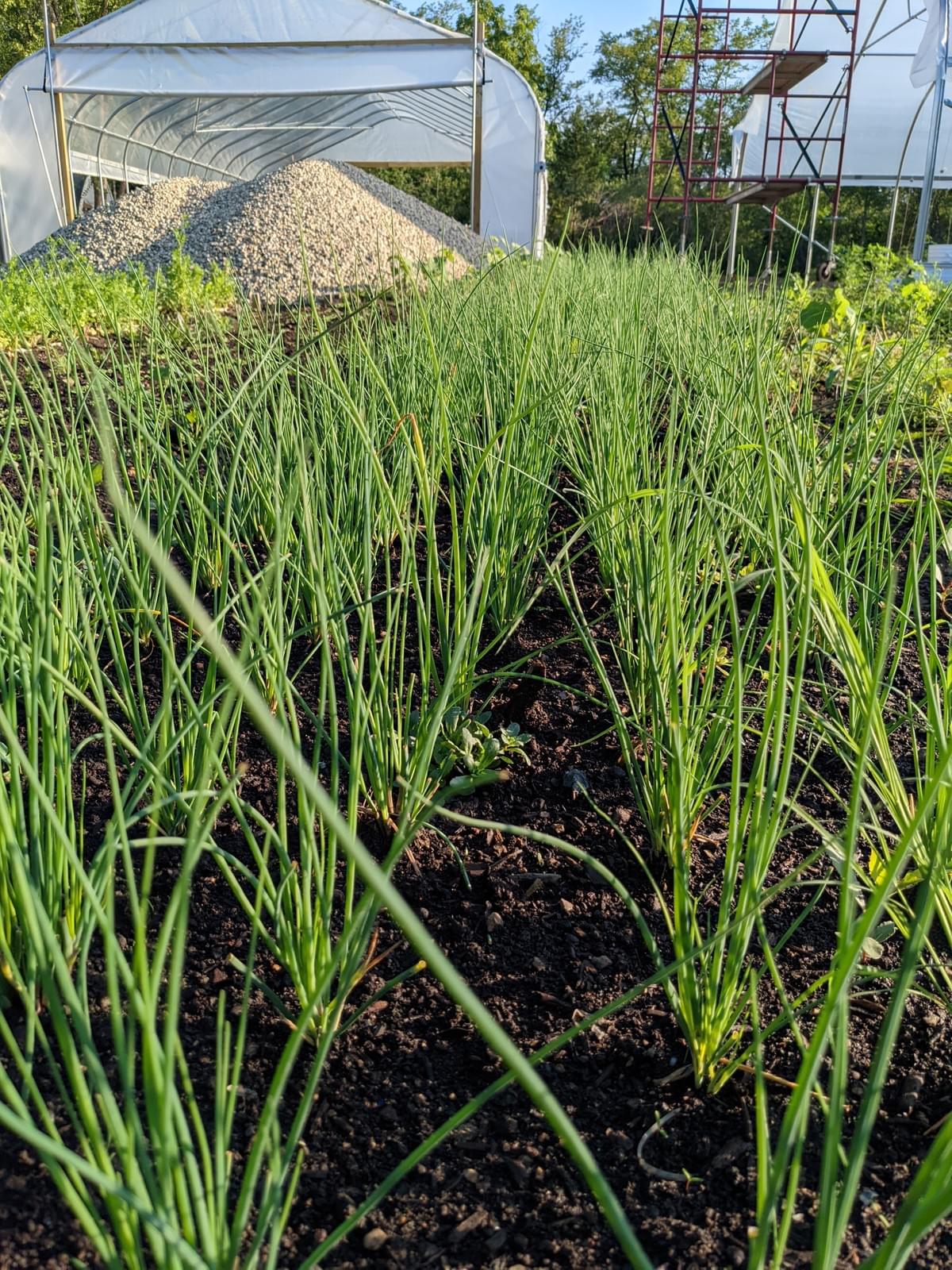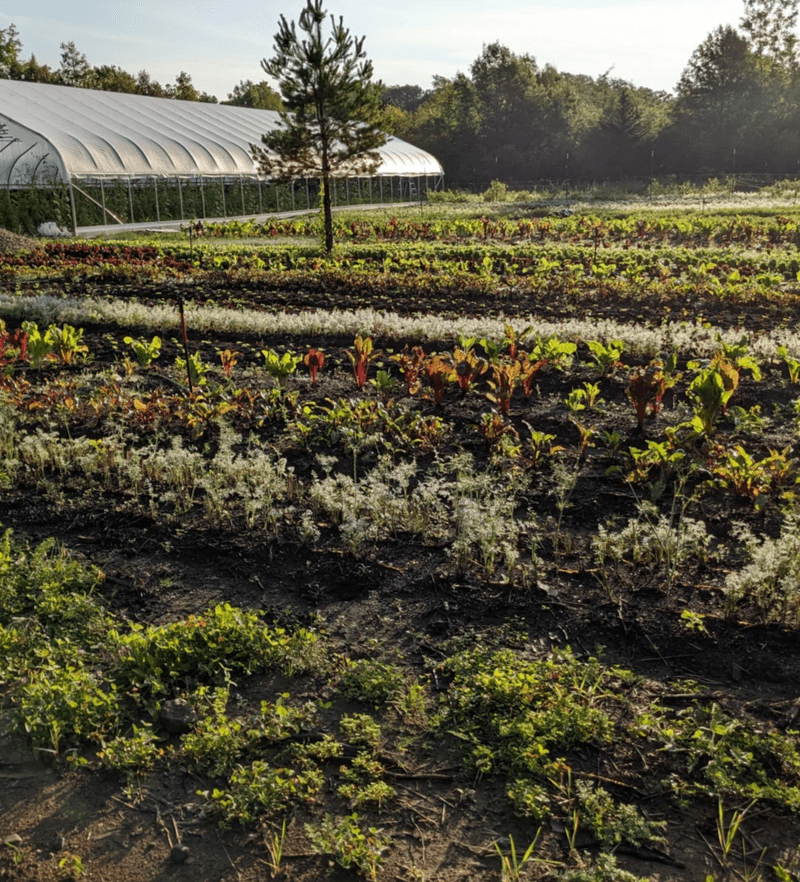

FREE HOME DELIVERY ON FRIDAYS 2pm-5pm TO:
Woodstock, Crystal Lake, McHenry,
Wonder Lake, Harvard, Marengo
**Home delivery orders must be placed by 9am on Friday**
Market Pickup Locations:
Park Ridge Market Tuesdays 10am-11am
15 Prairie Ave, Park Ridge, IL 60068
Elmhurst Market Tuesdays Noon-1pm
149 W Brush Hill Rd, Elmhurst, IL 60126
**Market pickup orders must be placed by noon on Monday**
What We Grow
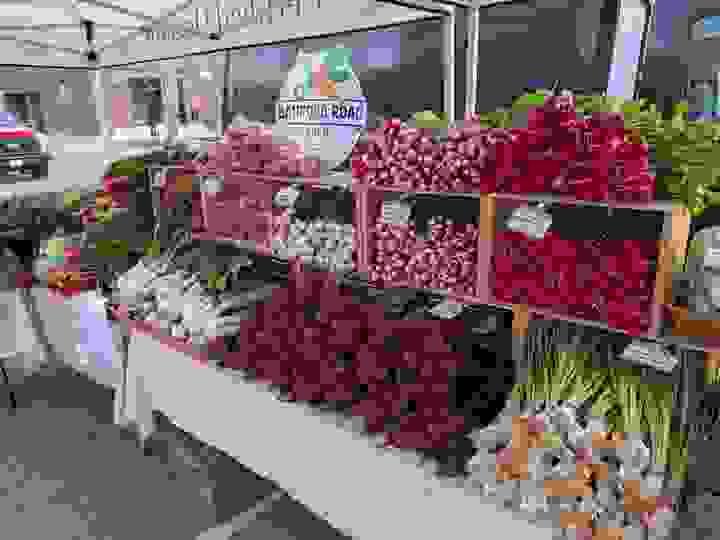
Spring to Fall
Lettuce heads, kale, rainbow chard, tomatoes, cucumbers, bell peppers, eggplant, beets, carrots, spinach, arugula, zucchini, bok choy, salad turnips, chives, scallions, rosemary, basil, cilantro, parsley, thyme, lavender, dill, tarragon, mint, sage
Human-Powered, Regenerative Agriculture

The Backstory
Julie and I (Jason) met in 2013 while serving as environmental conservation volunteers in the U.S. Peace Corps. For two years, we lived and worked in semi-rural Paraguay. Paraguayans have a deep connection to their land and are some of the happiest people on the planet. In that first year, my work led me to discover a huge love of gardening.
One sweltering Paraguayan summer night, I stashed my 3G hotspot up in the rafters over my bed. It was the only internet signal I could get. Sweating in bed, I found an article about Singing Frogs Farm in California. It was 2014 and many big farms were at risk of crop failure due to drought, but Singing Frogs was thriving. They claimed that removing tillage from their farm had drastically improved their resilience to drought and other impacts of climate change. They were some of the earliest pioneers in the organic, no-till farming movement and were proving that ecological farming practices could dramatically improve soil health. Oh, and by the way, this style of farming also sequesters atmospheric carbon in the soil, brings native bees back to the farm, and produces better-tasting and more nutrient-dense vegetables. Suffice it to say, the seed of my interest in farming was planted.
In the spring of 2016, Julie and I interned on two small farms to get a more intensive farming experience, one in California near Yosemite and the other in northern Idaho. The first farm showed us the financial hardship that can come with farming, but the second, Mountain Cloud Farm, convinced us that our vision was attainable. That summer we relocated to Shanghai to be near Julie's extended family. We set a goal to save enough money as teachers to buy land and start a farm somewhere in the United States. We taught in Shanghai for four years before finally meeting our savings goal.
In 2018, I learned about Neversink Farm in upstate New York. Conor Crickmore had taken small-farm efficiency to a whole new level. I immediately signed up for the Neversink Farm online course and began studying every detail of Conor's growing systems and his art of minimalist farm efficiency.
In the summer of 2020, Julie and I left China and moved to California. I worked full-time at Singing Frogs Farm while Julie attended grad school at Stanford. We had originally planned to settle down somewhere along the West Coast, but the sudden death of a very close friend reoriented my life plans overnight. I felt compelled to return to Illinois, where I grew up. The West Coast has all the national parks, mountains, and beaches I had been chasing for 10 years. But if you've ever looked at an old travel photo of a landscape without people in it, the photo isn't worth looking at for very long.
After 10 years of traveling the world, I was abruptly done. We were literally visiting potential farm properties in Oregon the day I got the phone call about Carl's accident. I finally realized what should have been obvious all along: that my farm should be in Illinois, close to my oldest friends and family. I'm grateful to Carl for showing me how precious and scarce our time together on this planet really is.
In January of 2022, we found a 9-acre property on Banford Road in Woodstock, Illinois. The parcel was a decades-overgrown tree nursery, so full of invasive buckthorn and honeysuckle you could barely walk through it. While under contract to buy the land, a Farm Service Agency loan officer drove by the property and immediately called to tell me that the property looked too rough to be farmed—that it was too risky.
In March of 2022, with a different lender, we closed on the property: 9 acres of wooded land that had no driveway access, no electricity, and no water. Against all odds, 3 months later, we were Certified Organic and selling at two farmers' markets.
In January of 2024, we became the proud parents of a healthy baby boy. He already loves going out on the farm.
Our Growing Methods
Our management practices significantly exceed USDA organic standards. Tillage-based agriculture such as conventional industrial farming (and even most organic farms), that optimize for a low "sticker price," rely on methods that create the need for potent synthetic fertilizers. Repeated tillage not only prevents accumulation of organic matter, but disrupts the entire subsurface ecosystem of microbes, insects, worms, and ground dwelling bees. We farm with hand tools and prioritize soil health to mitigate pest problems without the use of synthetic inputs, hence our slogan: hand grown in living soil. Even beautiful-looking organic vegetables at the grocery store may not be as nutrient-dense as they are supposed to be. Grocery store vegetables all come from large tillage-based farms — in soil that is barely alive. Our mission at Banford Road Farm is to maximize nutrient-density per acre, and that starts with the soil.
Banford Road Farm is a regenerative, no-till, human-powered farm. We are laser-focused on soil health and work to maintain ecological balance all across the property. We have one acre of vegetable production carved out inside of eight acres of woods. Lab data drives our soil regeneration through the use of a Haney soil test that verifies that we are in fact increasing subsurface carbon and building organic matter over time.

Disturb the soil as little as possible
Every good no-till farm starts with some initial tillage in the early years. There is a delicate process to successfully transition from conventional tillage to no-till. After breaking new ground with a tractor in year 1, we will never use a tractor tiller again. In year 2, we used a small walk-behind power harrow with vertical tines to stir the soil, but did not invert the soil layers. This type of soil disturbance is much less severe than a horizontal tine tractor tiller. In year 3, we plan to remove the power harrow entirely and use a broadfork alone to aerate the soil before each planting. In year 4 we hope to remove the broadfork as well and rely solely on plant roots and worms for soil aeration.

Keep the soil covered
Bare soil quickly dries out and the soil microbiome declines. The native soil needs to be covered with either a plant canopy or a blanket of mulch. We apply finished, certified organic compost to the soil surface as a mulch layer before each planting. In year 1, we applied 4" of compost to the soil surface, and in year 2 we applied only 2". In year 3, only a light dusting with compost will be necessary. This compost mulch layer also acts as a critical weed suppressant as it smothers many early stage weeds.

Plant a wide variety of crops in continuous succession
As soon as the soil thaws in spring, we use vegetables to feed the soil through their root exudates. At harvest time, we cut off the stalk of the crop at the soil surface and leave the root system in place. This practice both feeds the soil biology and holds the soil in place during heavy rain events. We then replant a new crop in the same bed where the old crop was harvested to restart the cycle.
Tried-and-True Favorites!
featuring our seasonal produce
June 13, 2025Truth be told, I had never tried kohlrabi (a bizarre-looking vegetable if there ever was one)...Contact Us
You can find our vegetables for sale at:
Woodstock Farmers' Market on Saturdays from 8am-1pm, May through November,
Park Ridge Farmers' Market on Saturdays from 7am-1pm, May 24th through October,
Elmhurst Farmers' Market on Wednesdays from 7am-1pm, June through October,
INDOOR Woodstock Winter Market on Saturdays from 9am-1pm, November through April.
Join our email list below for updates on new produce available and upcoming farm tours!
© 2022


